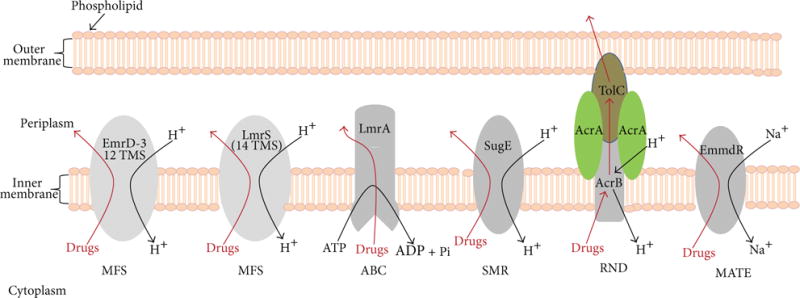Figure 2.

Antibacterial resistance by multidrug efflux pumps. Transporters of the MFS are capable of carrying solutes across the biological membrane, and the energy for solute translocation comes from the chemiosmotic gradient of cations [58–60]. EmrD-3 from V. cholerae [61] represents a MFS multidrug efflux pump (a drug/H+ antiporter) with 12 transmembrane domains, and LmrS from S. aureus [62] represents a MFS drug/H+ antiporter with 14 TMS. The transporters of the ABC superfamily can transport ions, small molecules, and macromolecules in and out of the cell using the hydrolysis of ATP [63, 64]. The SMR family members confer resistance to quaternary ammonium compounds as well as a variety of antibiotics and are represented by SugE [65, 66]. The RND superfamily of tripartite efflux pumps works by cation gradients and can be found in both Gram-positive and Gram-negative bacteria [67, 68]. The MATE superfamily of drug efflux pumps extrudes antibiotics out of the bacterial cell via cation gradients and is represented by EmmdR [69, 70]. Both outer and inner (cytoplasmic) membranes are shown for illustration purposes, as some of the transporters are found in Gram-positive bacteria which lack a second membrane. For clarity, the peptidoglycan is not shown.
